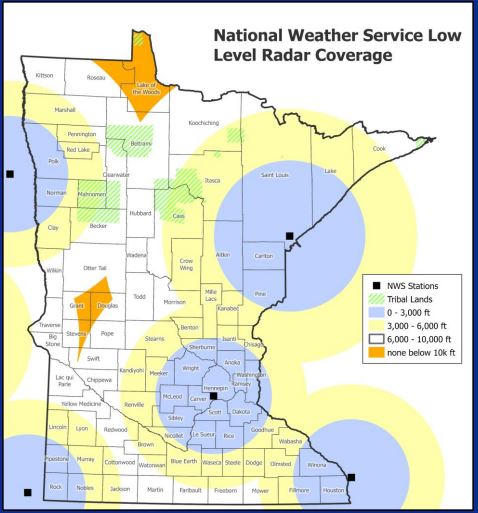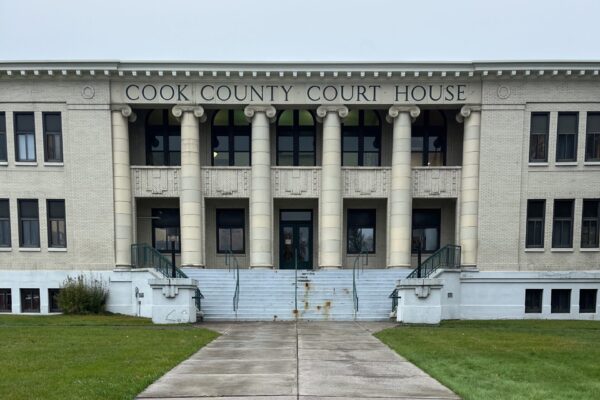Emergency Managers work to address weather radar gaps across Minnesota
As extreme weather events across the globe are on the rise, emergency managers in Minnesota are working to make weather data more accurate across the state.
Cook County Emergency Manager Mike Keyport explained that the Association of Minnesota Emergency Managers (AMEM) is spearheading the effort to study and address the gaps in weather radar. He told WTIP that the most accurate weather information is collected in areas closest to a radome, which houses a radar antenna. For Cook County residents, the closest radome collecting information for the National Weather Service is near Duluth.
Weather radar gets less accurate further away from the radome because the radar signal continues to move in a straight line, while the earth curves. Those factors together mean that the hight of the radar signal, relative to the ground, gradually increases. Keyport said that for detecting weather, the radomes in Minnesota are limited to a 130 to 150 mile radius. AMEM found the greatest accuracy closest to the radomes, and consider the areas on the periphery of the radius to be less reliable.
The initial data that AMEM collected showed that 72 of the state’s 87 counties, including several reservations, are impacted by these low radar gaps. According to Keyport, Cook County and Grand Portage are considered to be in one of the worst gaps. He said that while Grand Marais may fall within the 150 mile maximum radius of the radome near Duluth, the east end of the county, including Grand Portage, lacks strong radar coverage.
After studying the issue, AMEM is now seeking to fill some of the gaps across the state. Keyport is part of a committee working to evaluate where smaller radomes could be placed that would have maximum impact for addressing the gaps. Those antennas would be able to detect weather in a roughly 60 mile radius.
In Cook County, Keyport is coordinating with the county’s Management Information Systems department and Grand Portage Emergency Manager Ruth Vogel to consider location options. He said that once potential locations are identified, if the program is funded, an new radome could be installed in Cook County as early as summer of 2026. He said that the main considerations for location are covering areas with the largest populations, and being able to extend some coverage into the boundary waters.
Having the additional radome would have a big impact according to Keyport. He said, “It would really be huge for public safety. And when you consider, you know, should we have an event, as we do, people get lost, people get hurt, and these weather related situations where we have to send in first responders, then we can be more assured that they’re safe when they’re heading in there with this more accurate radar.”
Keyport said that, at this time, AMEM and some Minnesota counties are working to lobby the state legislature to fund the effort to fill radar gaps. He said, “We will have some folks, likely from our committee, maybe myself, down to testify during this budget cycle, this this winter and spring, and hopefully we’re just looking for some direct funding to at least get the program started.” He added that as the project gets off the ground, the plan will be to prioritize the areas of the state, like Cook County, that have some of the most sever gaps at this time.
WTIP’s Kirsten Wisniewski spoke with Cook County Emergency Manager Mike Keyport about weather radar gaps across the state. Audio of that interview is below.














